Dynamic Behavior Forecast of an Experimental Indirect Solar Dryer Using an Artificial Neural Network
Abstract
:1. Introduction
2. Materials and Methods
2.1. Experimental Setup of the Solar Dryer
2.2. Data Acquisition
2.3. Weather Station
2.4. Artificial Neural Network Model
- Solar radiation (Ra)
- Airflow velocity (Va)
- Ambient temperature (Ta)
- Solar collector pipe temperatures (Tt1, Tt2, Tt3, Tt4)
- Number of trays (Ntray)
- Separation between each of the trays (Dt)
- Drying chamber temperature (Tc).
3. Results
3.1. Climatic Data and Parameters of the Solar Dryer
3.2. Results of the Artificial Neural Network
3.3. Verification and Validation of Results
4. Discussion
5. Conclusions
Author Contributions
Funding
Data Availability Statement
Conflicts of Interest
References
- Tlatelpa-Becerro, A.; Rico-Martínez, R.; Urquiza, G.; Calderón-Ramírez, M. Obtaining of Crataegus mexicana leaflets using an indirect solar dryer. Rev. Mex. Ing. Quím. 2020, 2, 669–676. [Google Scholar] [CrossRef]
- Marwan, B.; Chawki, L.; Mirna, F.L.; Christy, L. Solar drying simulation of different products: Lebanese case. Energy Rep. 2020, 6, 548–564. [Google Scholar] [CrossRef]
- Abhay, L.; Chandramohan, V.P.; Raju, V.R.K. Design, Development and Performance of Indirect Type Solar Dryer for Banana Drying. Energy Procedia 2017, 109, 409–416. [Google Scholar] [CrossRef]
- Kokatea, D.H.; Kale, D.M.; Korpale, V.S.; Shinde, Y.H.; Panse, S.V.; Deshmukh, S.P.; Pandit, A.B. Energy Conservation Through Solar Energy Assisted Dryer for Plastic Processing Industry. Energy Procedia 2014, 54, 376–388. [Google Scholar] [CrossRef]
- Nabnean, S.; Nimnuan, P. Experimental performance of direct forced convection household solar dryer for drying banana. Case Stud. Therm. Eng. 2020, 22, 100787. [Google Scholar] [CrossRef]
- Elieser, T. Mathematical modeling and simulation of a solar agricultural dryer with back-up biomass burner and thermal storage. Case Stud. Therm. Eng. 2018, 12, 149–165. [Google Scholar] [CrossRef]
- Mehmet, D.; Erdem, A.; Ebru, K.A. Numerical and experimental analysis of heat and mass transfer in the drying process of the solar drying system. Eng. Sci. Technol. Int. J. 2021, 24, 236–246. [Google Scholar] [CrossRef]
- Petros, D.; Mesele, H.; Amanuel, K.; Asfafaw, H.; Mekonnen, G.; Maarten, V. Design, development and CFD modeling of indirect solar food dryer. Energy Procedia 2019, 158, 1128–1134. [Google Scholar] [CrossRef]
- Guofeng, Y.; Liang, H.; Xing, L.; Li, X.; Wenxue, T.; Zhifeng, W. Experimental investigation of a solar dryer system for drying carpet. Energy Procedia 2018, 70, 626–633. [Google Scholar] [CrossRef]
- Nimnuan, P.; Nabnean, S. Experimental and simulated investigations of the performance of the solar greenhouse dryer for drying cassumunar ginger (Zingiber cassumunar Roxb.). Case Stud. Therm. Eng. 2020, 22, 100745. [Google Scholar] [CrossRef]
- Mohammed, A.H.; Klaus, G.; Mohammad, S.H. Mathematical model for a heat pump dryer for aromatic plant. Procedia Eng. 2013, 56, 510–520. [Google Scholar] [CrossRef]
- Hosain, D.; Abbas, R.A.; Ali, A.; Mohsen, A.; Gholamhassan, N.; Jalal, K. Study of the drying kinetics of pepper. J. Saudi Soc. Agric. Sci. 2014, 13, 130–138. [Google Scholar] [CrossRef]
- Mourad, A.; Salah, B.M.; Imed, Z.; Ahmed, B. Kinetic study of the convective drying of spearmint. J. Saudi Soc. Agric. Sci. 2014, 13, 1–7. [Google Scholar] [CrossRef]
- Oluwole, A.O.; Oluyemisi, A.A.; Pelumi, E.O.; Hilary, I.O.; Adebowale, O.A.; Esivue, A.S. Drying kinetic of industrial cassava flour: Experimental data in view. Data Brief 2017, 15, 501–510. [Google Scholar] [CrossRef]
- Ramallo, L.A.; Mascheroni, R.H. Quality evaluation of pineapple fruit during drying process. Food Bioprod. Process. 2012, 90, 275–283. [Google Scholar] [CrossRef]
- Shiva, K.M.; DurgaPrasad, B.; Basavaraj, M. An Experimental Study on Drying Kinetics of Guava Fruit (Psidium guajava L.) By Thin Layer Drying. IOSR J. Environ. Sci. Toxicol. Food Technol. 2015, 1, 74–80. [Google Scholar]
- Tlatelpa, B.A.; Rico, M.R.; Castro, G.L.; Urquiza, G.; Calderón-Ramírez, M. Artificial Neural Networks (ANN) and Kalman Filter Algorithms to Predict Output Temperatures on a Heat Exchanger. Int. J. Appl. Eng. Res. 2018, 17, 13130–13135. [Google Scholar]
- Hikmet, E.; Mustafa, I. Modelling of a vertical ground coupled heat pump system by using artificial neural networks. Expert Syst. Appl. 2009, 36, 10229–10238. [Google Scholar] [CrossRef]
- González, G.R.; Rico, M.R.; Wolf, W.; Lübke, M.; Eiswirth, M.; Anderson, J.S.; Kevrekidis, I.G. Characterization of a two-parameter mixed-mode electrochemical behavior regime using neural networks. Phys. D Nonlinear Phenom. 2001, 151, 27–43. [Google Scholar] [CrossRef]
- Kapil, V.; Panigrah, P.K. Artificial neural network control of a heat exchanger in a closed flow air circuit. Appl. Soft Comput. 2005, 5, 441–465. [Google Scholar] [CrossRef]
- Ramírez, A.E.; Calderon, R.M.; Rico, M.R.; Gonzalez, F.C.; Parmananda, P. Detecting Bifurcations in an Electrochemical Cell Employing an Assisted Reference Model Strategy. J. Phys. Chem. 2012, 117, 535–540. [Google Scholar] [CrossRef]
- Hikmet, E.; Mustafa, I.; Abdulkadir, S.; Mehmet, E. Performance prediction of a ground-coupled heat pump system using artificial neural networks. Expert Syst. Appl. 2008, 35, 1940–1948. [Google Scholar] [CrossRef]
- Vinoth, K.K.; Paradeshi, L.; Srinivas, M.; Jayaraj, S. Parametric Studies of a Simple Direct Expansion Solar Assisted Heat Pump Using ANN and GA. Energy Procedia 2016, 90, 625–634. [Google Scholar] [CrossRef]
- Luca, S.; Herbert, A.Z.; Jan, D.; Camilo, C.M.; Van Bael, J.; Adriano, S. Modeling the performance of a sorption thermal energy storage reactor using artificial neural networks. Appl. Energy 2019, 253, 113525. [Google Scholar] [CrossRef]
- Ashly, M.T.; Nizar, A.; Subathra, M.S.; Lazarus, G.A. Analysing the Performance of a Flat Plate Solar Collector with Silver/Water Nanofluid Using Artificial Neural Network. Procedia Comput. Sci. 2016, 93, 33–40. [Google Scholar] [CrossRef]
- Chaibi, Y.; Malvoni, M.; El, R.T.; Kousksou, T.; Zeraouli, Y. Artificial neural-network based model to forecast the electrical and thermal efficiencies of PVT air collector systems. Clean. Eng. Technol. 2021, 4, 100132. [Google Scholar] [CrossRef]
- Gilles, N.; Christophe, P.; Said, D. Estimation of tilted solar irradiation using Artificial Neural Networks. Energy Procedia 2013, 42, 33–42. [Google Scholar] [CrossRef]
- İlhan, C.; Okan, E.; Engin, G.; Ali, E.G. The prediction of photovoltaic module temperature with artificial neural networks. Case Stud. Thermal Eng. 2014, 3, 11–20. [Google Scholar] [CrossRef]
- Anurag, K.; Nikhil, R.; Pijush, S. Prediction of heat transfer rate of a Wire-on-Tube type heat exchanger: An Artificial Intelligence approach. Procedia Eng. 2013, 64, 74–83. [Google Scholar] [CrossRef]
- Haritonova, L. On Neural Modeling of Heat Exchange in Heat Exchangers (Recuperators) with the Systems of Plane-Parallel Impingement Jets for Machine Building and Metallurgical Productions. Procedia Eng. 2017, 206, 1002–1008. [Google Scholar] [CrossRef]
- Promvonge, P.; Eiamsa, A.S.; Wongcharee, K.; Chuwattanakul, V.; Samruaisin, P.; Chokphoemphun, S.; Nanan, K.; Eiamsa, A.P. Characterization of heat transfer and artificial neural networks prediction on overall performance index of a channel installed with arc-shaped baffle turbulators. Case Stud. Therm. Eng. 2021, 26, 101067. [Google Scholar] [CrossRef]
- Xie, G.N.; Wang, Q.W.; Zeng, M.; Luo, L.Q. Heat transfer analysis for shell-and-tube heat exchangers with experimental data by artificial neural networks approach. Appl. Therm. Eng. 2007, 27, 1096–1104. [Google Scholar] [CrossRef]
- Yasar, I. A new approach for the prediction of the heat transfer rate of the wire-on-tube type heat exchanger––use of an artificial neural network model. Appl. Therm. Eng. 2003, 23, 243–249. [Google Scholar] [CrossRef]
- Gabriele, B.; Vincenzo, T.; Nadia, U. Neural Networks Implementation for Analysis and Control of Heat Exchange Process in a Metal Foam Prototypal Device. Procedia CIRP 2017, 62, 518–522. [Google Scholar] [CrossRef]
- Guptaa, A.K.; Kumara, P.; Sahooa, R.K.; Sahub, A.K.; Sarangia, S.K. Performance measurement of plate fin heat exchanger by exploration: ANN, ANFIS, GA, and SA. J. Comput. Des. Eng. 2017, 4, 60–68. [Google Scholar] [CrossRef]
- Yasar, I.; Akif, K.; Cem, P. Performance prediction for non-adiabatic capillary tube suction line heat exchanger: An artificial neural network approach. Energy Convers. Manag. 2005, 46, 223–232. [Google Scholar] [CrossRef]
- Mohammad, K.; Vali, R.S.; Reza, A.C.; Ebrahim, T.; Abbaspour, G.Y.; Iman, G. ANFIS and ANNs model for prediction of moisture diffusivity and specific energy consumption potato, garlic and cantaloupe drying under convective hot air dryer. Inf. Process. Agric. 2018, 5, 372–387. [Google Scholar] [CrossRef]
- Momenzadeh, L.; Zomorodian, A.; Mowla, D. Applying Artificial Neural Network for Drying Time Prediction of Green Pea in a Microwave Assisted Fluidized Bed Dryer. J. Agr. Sci. Technol. 2012, 14, 513–522. [Google Scholar] [CrossRef]
- Shamsollah, A.; Kosari, M.A.; Mohammad, B. Prediction of wheat moisture content at harvest time through ANN and SVR modeling techniques. Inf. Process. Agric. 2020, 7, 500–510. [Google Scholar] [CrossRef]
- Tohsing, K.; Janjai, S.; Lamlert, N.; Mundpookhier, T.; Chanalert, W.; Bala, B.K. Experimental performance and artificial neural network modeling of solar drying of litchi in the parabolic greenhouse dryer. J. Renew. Energy Smart Grid Technol. 2018, 13, 83–95. [Google Scholar]
- Krischer, K.; Rico, M.R.; Kevrekidis, I.G.; Rotermund, H.H.; Ertl, G.; Hudson, J.L. Model identification of a spatiotemporally varying catalytic reaction. AIChE J. 1993, 1, 89–98. [Google Scholar] [CrossRef]
- Khataeea, A.R.; Kasiri, M.B. Artificial neural networks modeling of contaminated water treatment processes by homogeneous and heterogeneous nanocatalysis. J. Mol. Catal. A Chem. 2010, 331, 86–100. [Google Scholar] [CrossRef]
- Arzu, S.S. Performance analysis of single-stage refrigeration system with internal heat exchanger using neural network and neuro-fuzzy. Renew. Energy 2011, 36, 2747–2752. [Google Scholar] [CrossRef]
- Jian, Z.; Fariborz, H. Development of Artificial Neural Network based heat convection algorithm for thermal simulation of large rectangular cross-sectional area Earth-to-Air Heat Exchangers. Energy Build. 2010, 42, 435–440. [Google Scholar] [CrossRef]
- Reza, B.; Masoud, R. Prediction of heat transfer and flow characteristics in helically coiled tubes using artificial neural networks. Int. Commun. Heat Mass Transf. 2012, 39, 1279–1285. [Google Scholar] [CrossRef]
- Gongnan, X.; Bengt, S.; Qiuwang, W.; Linghong, T. Performance predictions of laminar and turbulent heat transfer and fluid flow of heat exchangers having large tube-diameter and large tube-row by artificial neural networks. Int. J. Heat Mass Transf. 2009, 52, 2484–2497. [Google Scholar] [CrossRef]
- Soheil, A.; Carey, J.S.; Robert, W.B. Application of neural networks to predict the transient performance of a Run-Around Membrane Energy Exchanger for yearly non-stop operation. Int. J. Heat Mass Transf. 2012, 55, 5403–5416. [Google Scholar] [CrossRef]
- Unal, A.; Aydin, K.M.; Feridun, O.A. Estimation of heat transfer in oscillating annular flow using artificial neural networks. Adv. Eng. Softw. 2009, 40, 864–870. [Google Scholar] [CrossRef]
- Romero, V.M.; Cerezo, E.; Garcia, M.; Sanchez, M.H. Simulation and validation of vanilla drying process in an indirect solar dryer prototype using CFD Fluent program. Energy Procedia 2014, 57, 1651–1658. [Google Scholar] [CrossRef]
- Suherman, S.; Hadiyanto, H.; Evan, E.S.; Shesar, A.R.; Aditya, R.P. Towards an optimal hybrid solar method for lime-drying behavior. Heliyon 2020, 6, e05356. [Google Scholar] [CrossRef] [PubMed]
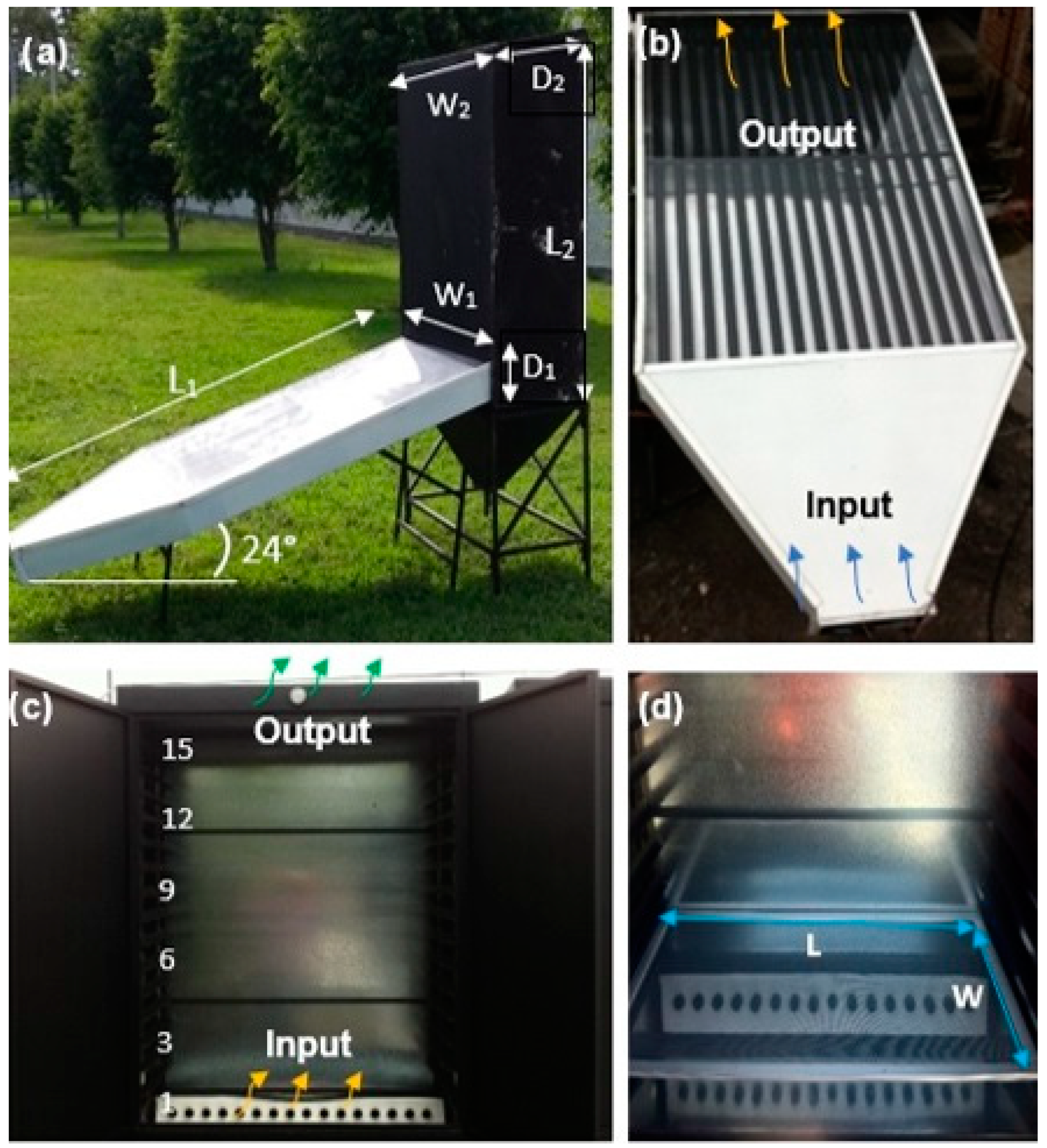
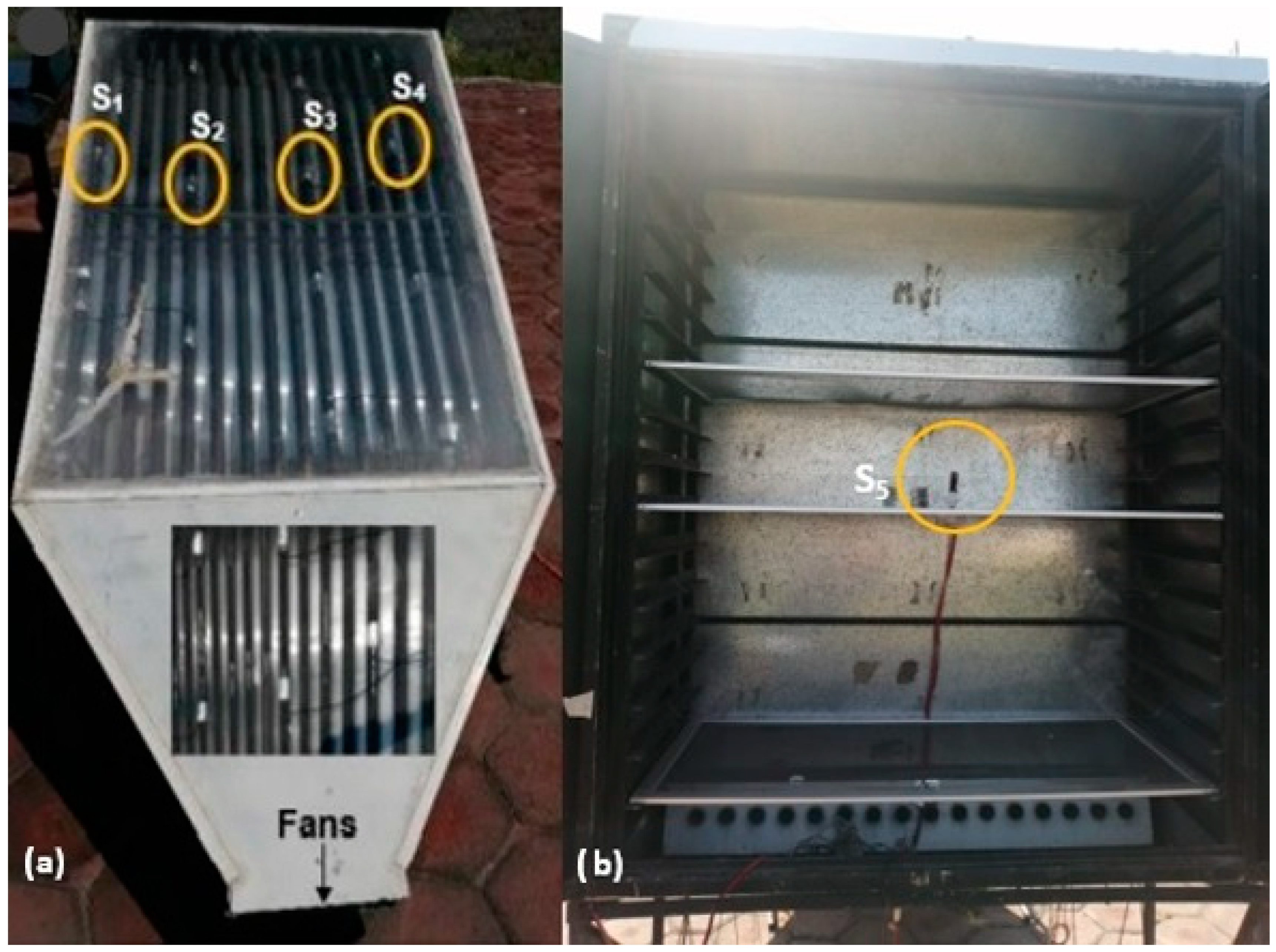
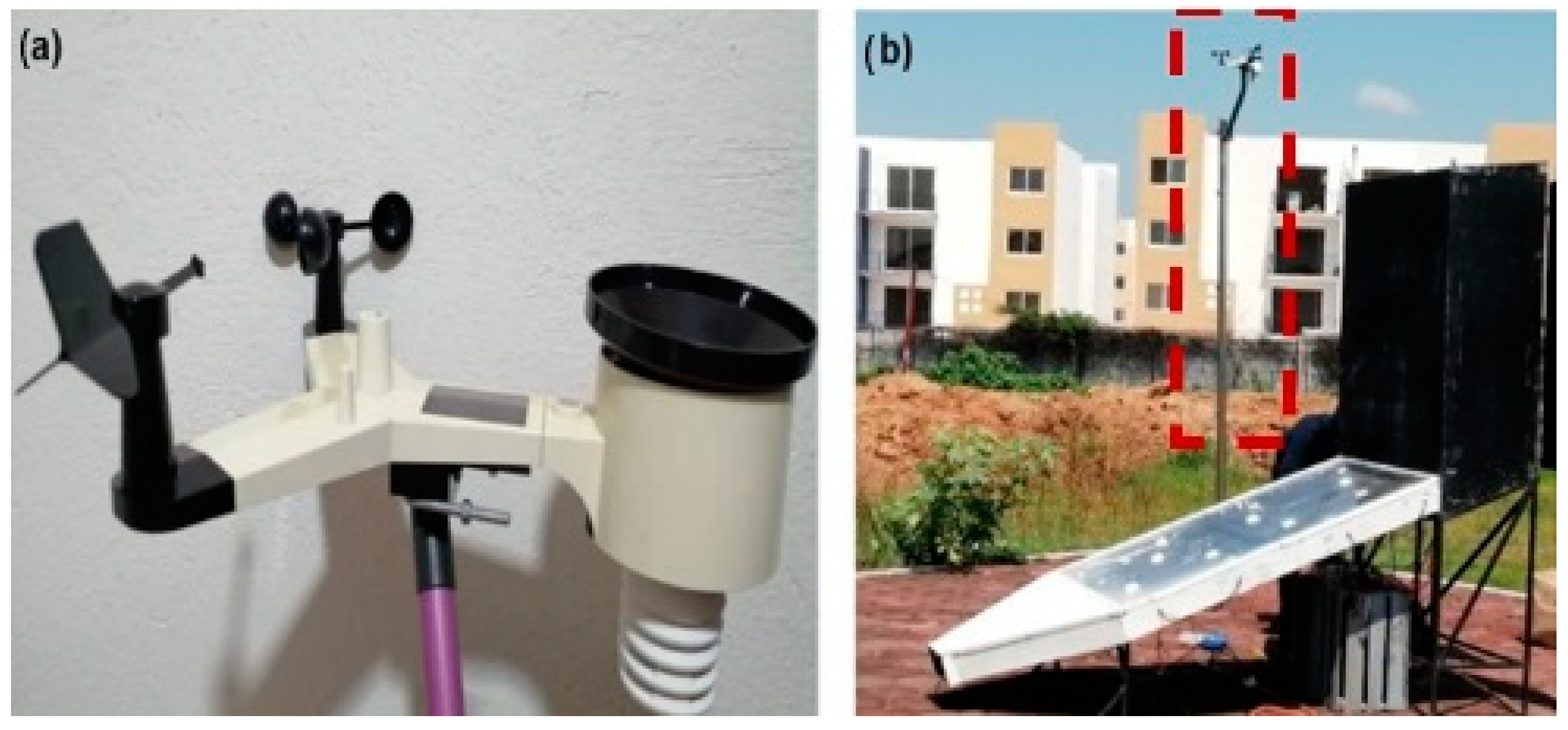
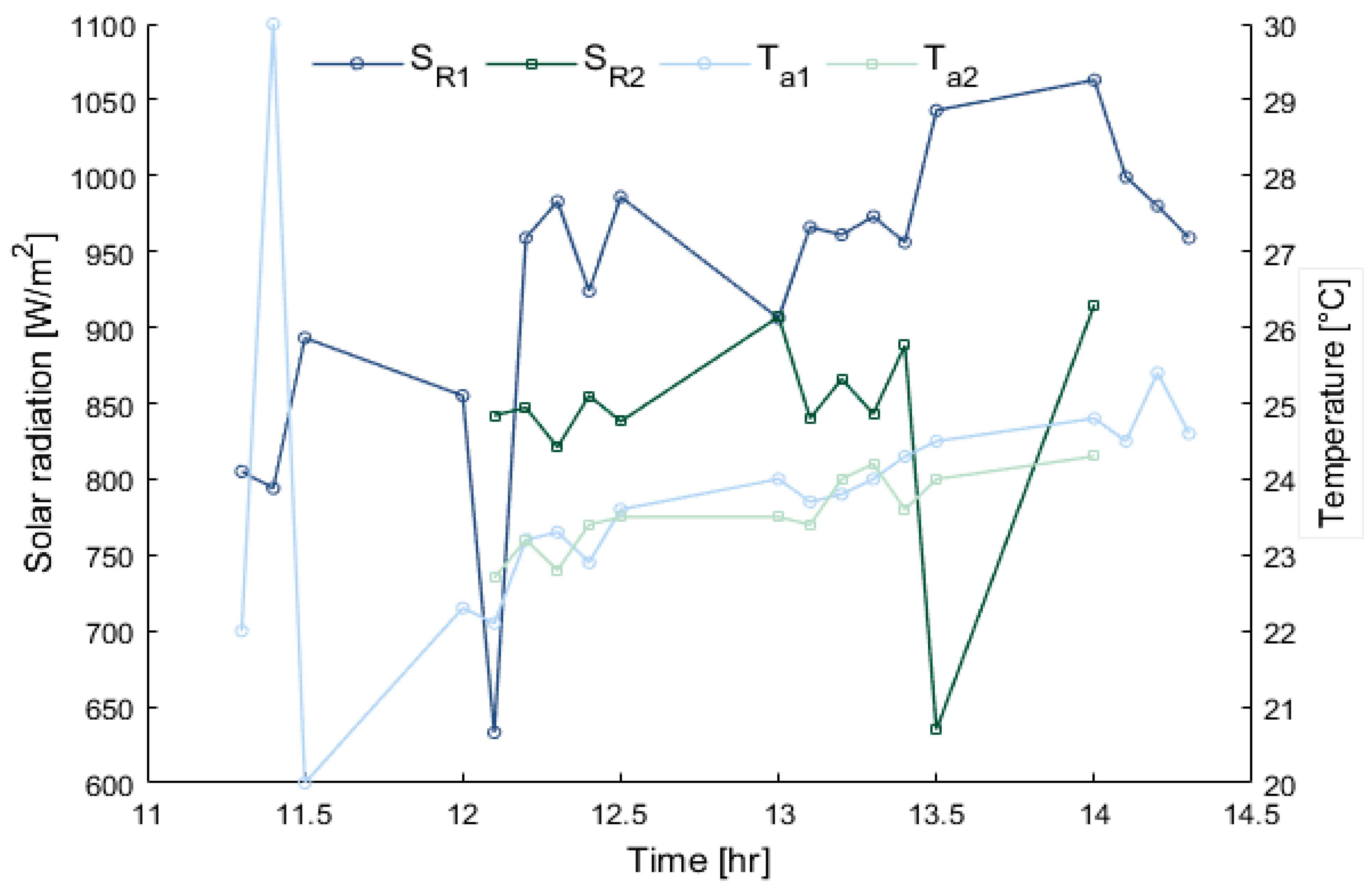
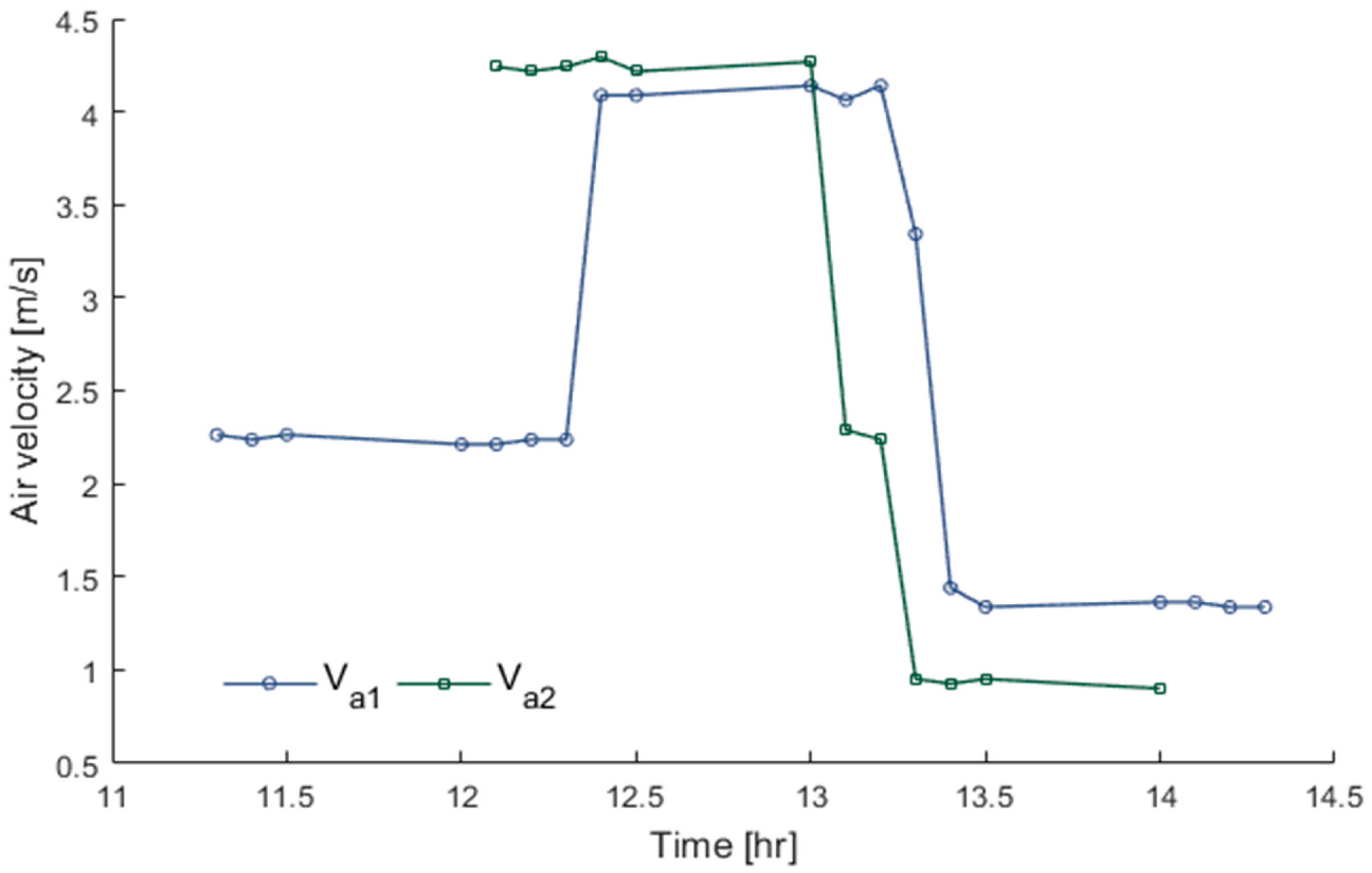
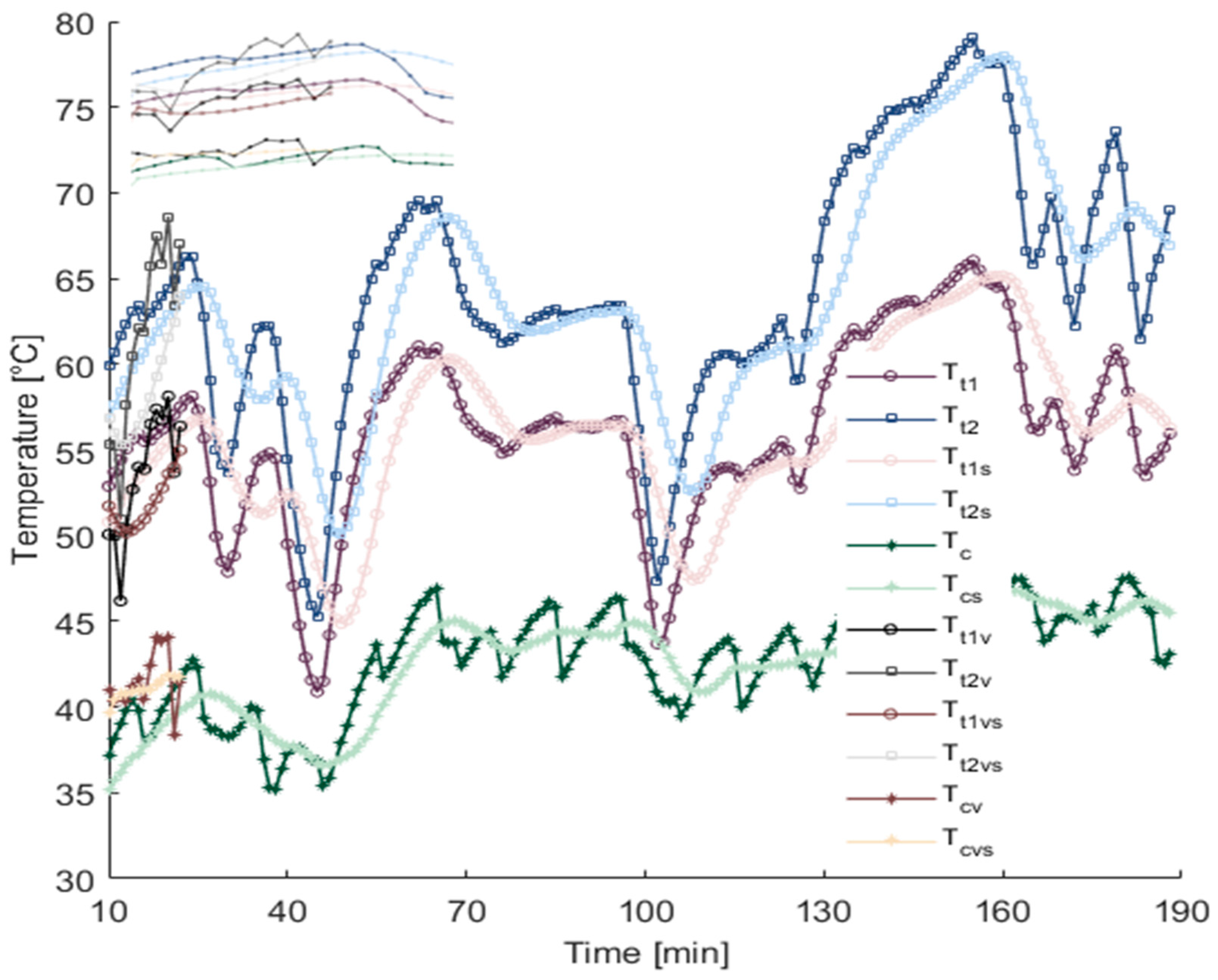
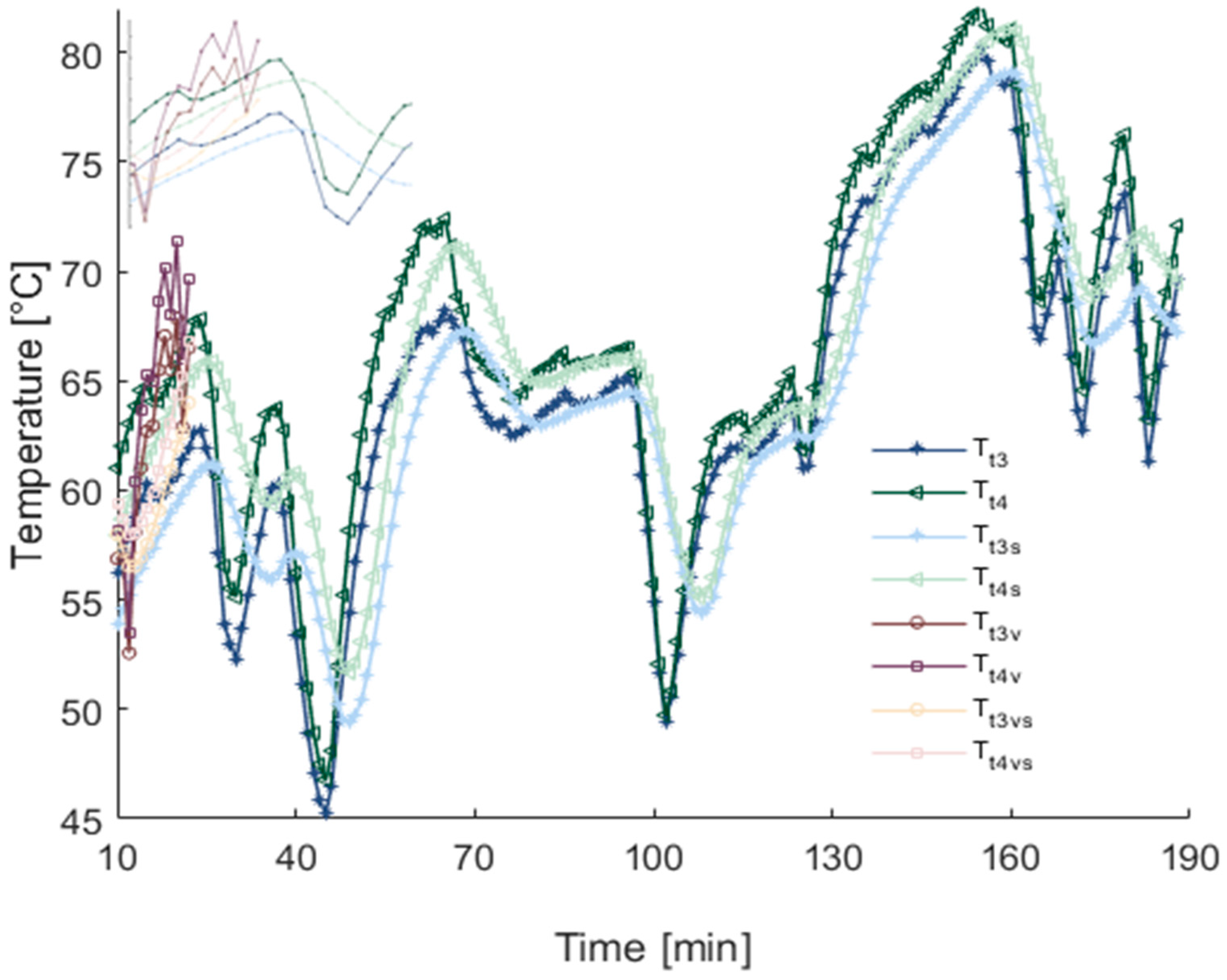
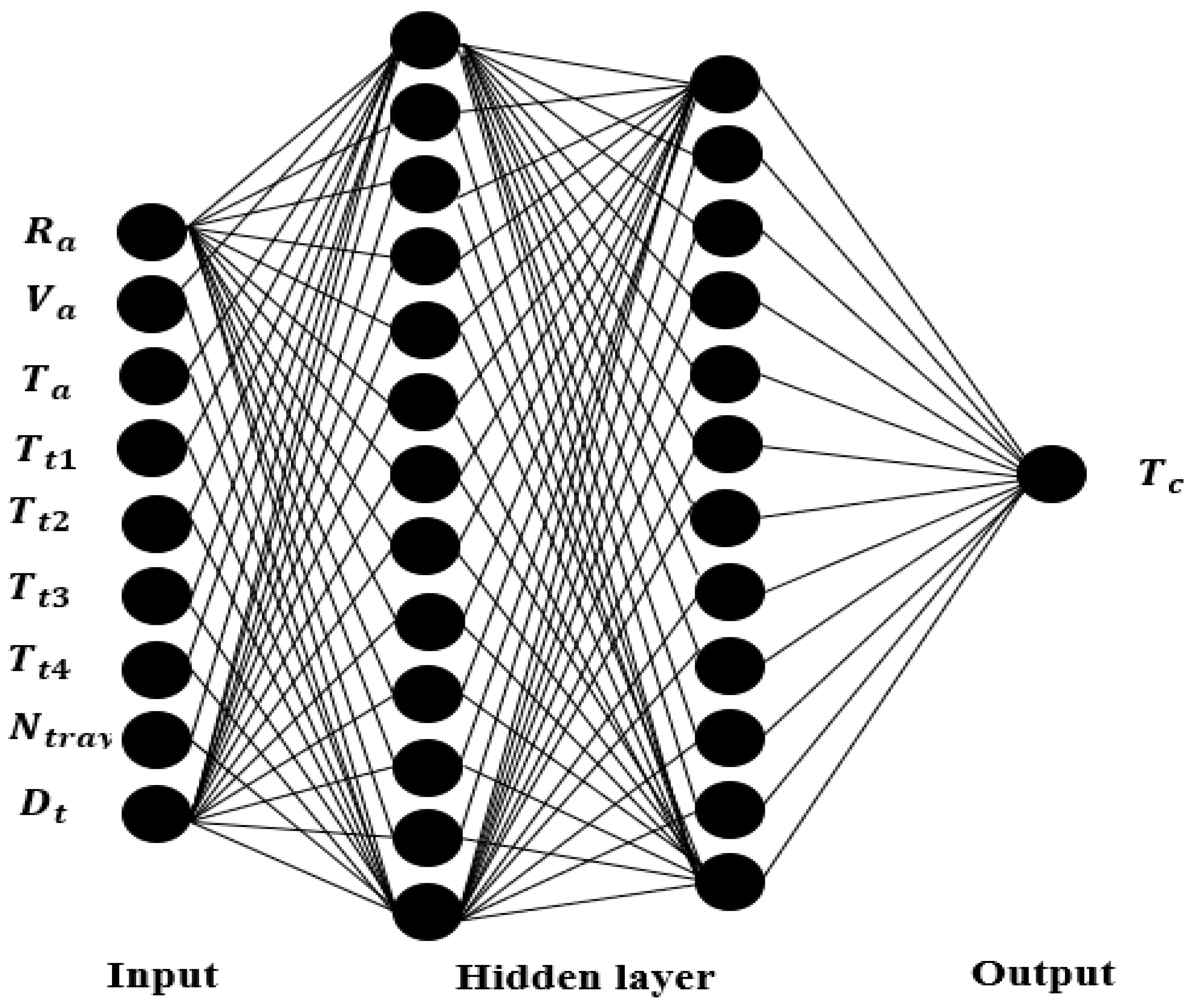
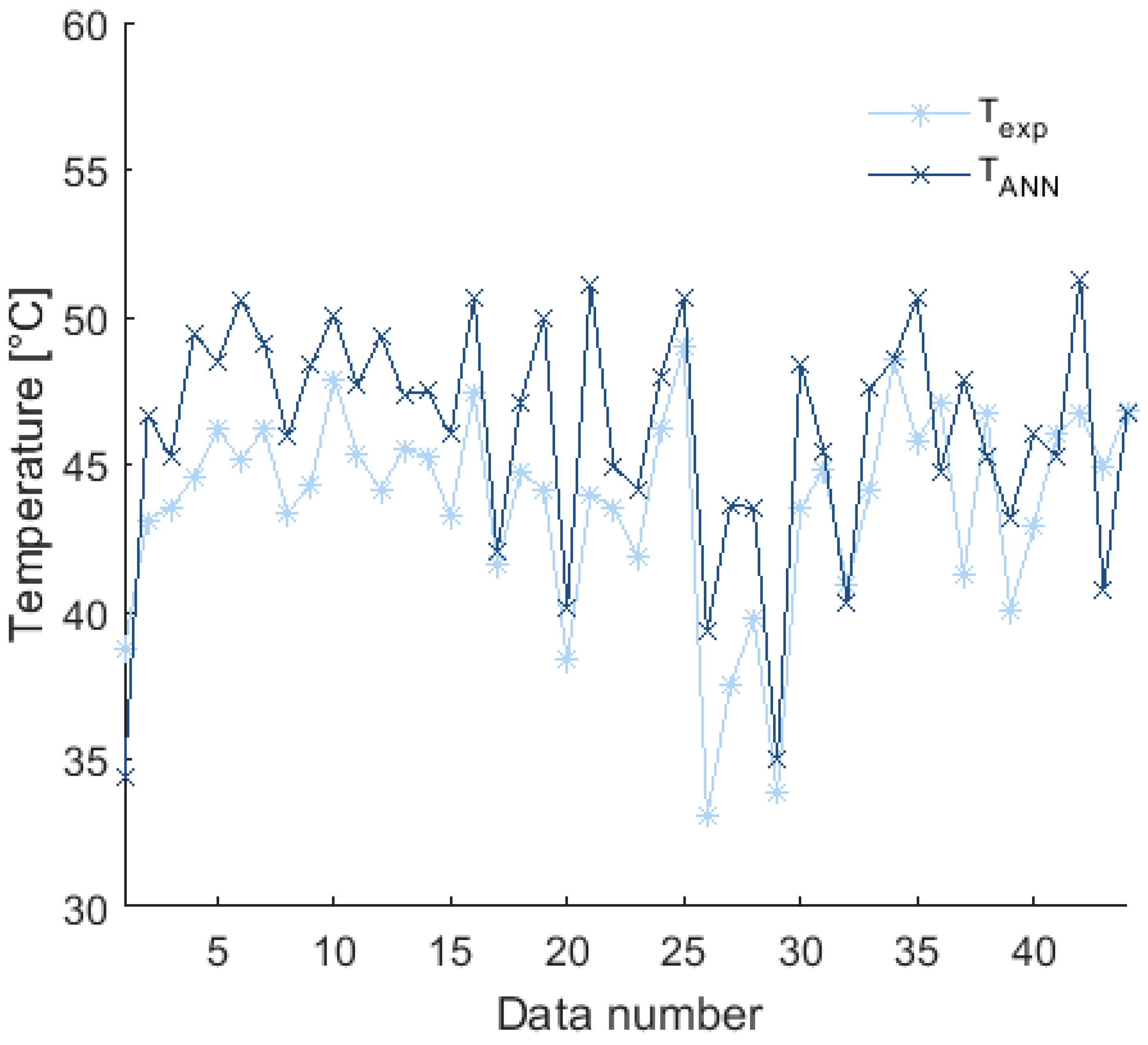
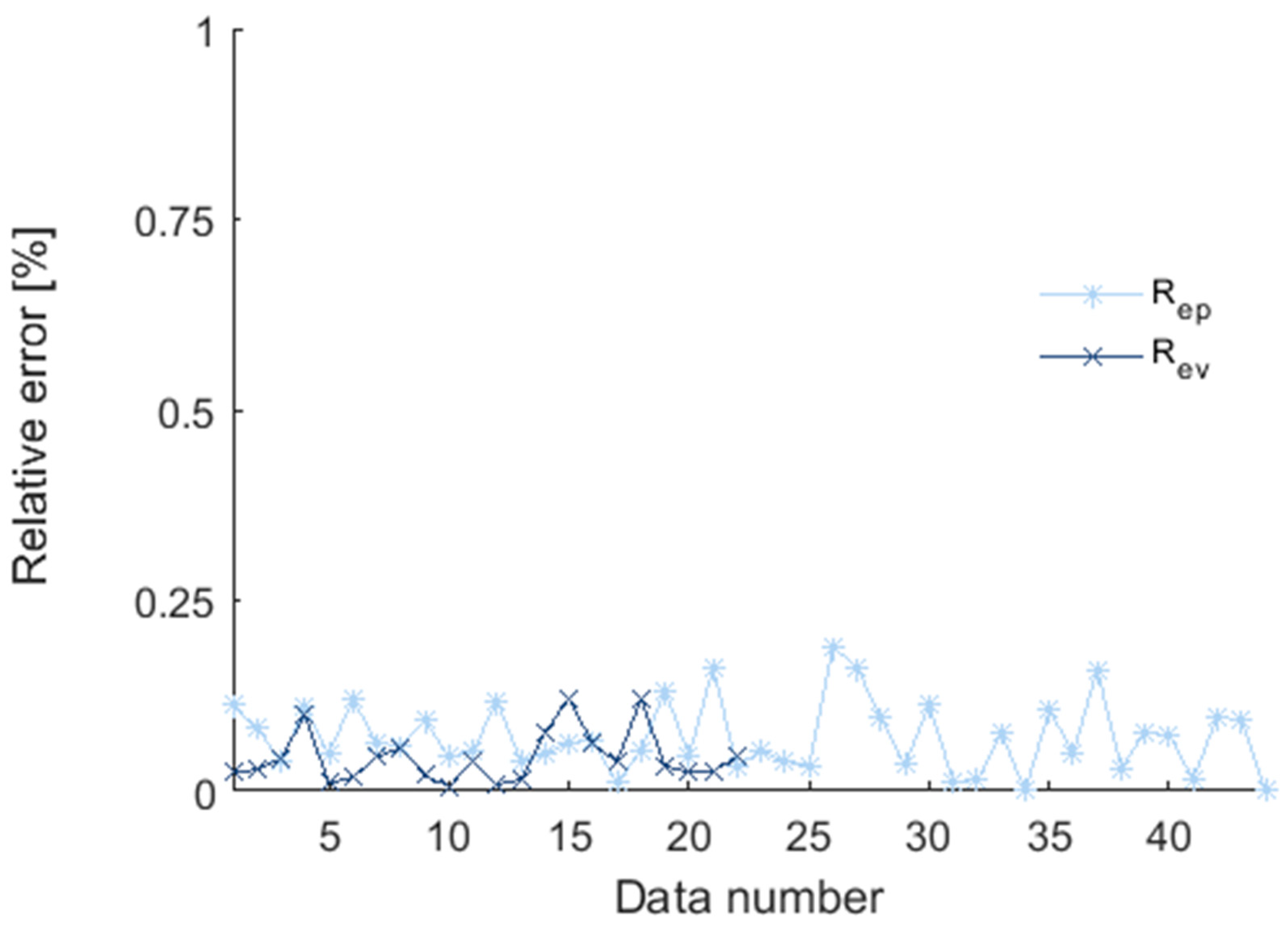
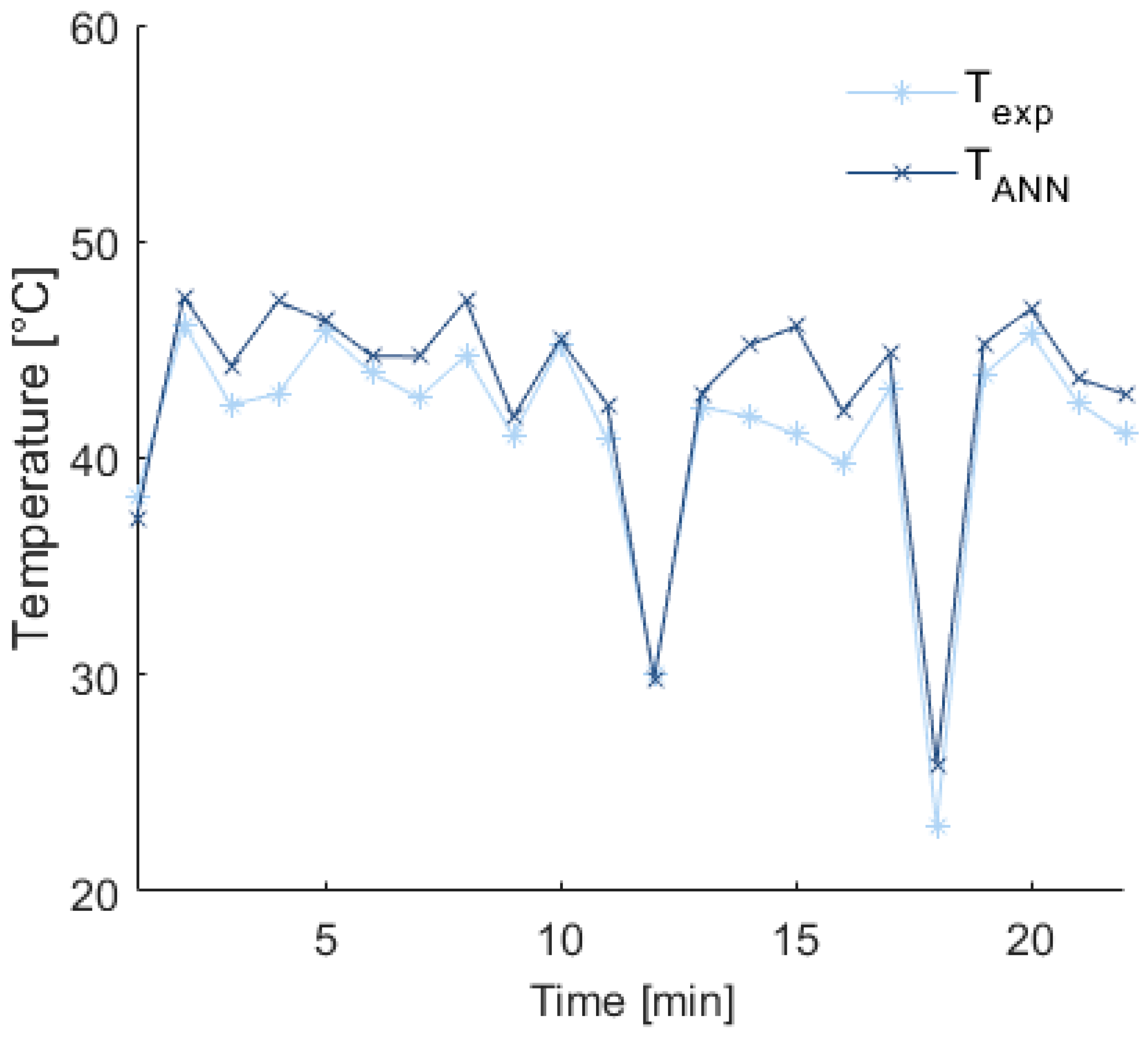
| Training–Verification | Validation | ||
|---|---|---|---|
| (Ntray) | Dt (m) | (Ntray) | Dt (m) |
| 15 | 0.07 | 15 | 0.07 |
| 10 | 0.105 | 12 | 0.087 |
| 5 | 0.21 | 10 | 0.105 |
| 8 | 0.131 | ||
| 5 | 0.21 | ||
Disclaimer/Publisher’s Note: The statements, opinions and data contained in all publications are solely those of the individual author(s) and contributor(s) and not of MDPI and/or the editor(s). MDPI and/or the editor(s) disclaim responsibility for any injury to people or property resulting from any ideas, methods, instructions or products referred to in the content. |
© 2023 by the authors. Licensee MDPI, Basel, Switzerland. This article is an open access article distributed under the terms and conditions of the Creative Commons Attribution (CC BY) license (https://creativecommons.org/licenses/by/4.0/).
Share and Cite
Tlatelpa Becerro, A.; Rico Martínez, R.; López-Vidaña, E.C.; Montiel Palacios, E.; Torres Segundo, C.; Gadea Pacheco, J.L. Dynamic Behavior Forecast of an Experimental Indirect Solar Dryer Using an Artificial Neural Network. AgriEngineering 2023, 5, 2423-2438. https://doi.org/10.3390/agriengineering5040149
Tlatelpa Becerro A, Rico Martínez R, López-Vidaña EC, Montiel Palacios E, Torres Segundo C, Gadea Pacheco JL. Dynamic Behavior Forecast of an Experimental Indirect Solar Dryer Using an Artificial Neural Network. AgriEngineering. 2023; 5(4):2423-2438. https://doi.org/10.3390/agriengineering5040149
Chicago/Turabian StyleTlatelpa Becerro, Angel, Ramiro Rico Martínez, Erick César López-Vidaña, Esteban Montiel Palacios, César Torres Segundo, and José Luis Gadea Pacheco. 2023. "Dynamic Behavior Forecast of an Experimental Indirect Solar Dryer Using an Artificial Neural Network" AgriEngineering 5, no. 4: 2423-2438. https://doi.org/10.3390/agriengineering5040149
APA StyleTlatelpa Becerro, A., Rico Martínez, R., López-Vidaña, E. C., Montiel Palacios, E., Torres Segundo, C., & Gadea Pacheco, J. L. (2023). Dynamic Behavior Forecast of an Experimental Indirect Solar Dryer Using an Artificial Neural Network. AgriEngineering, 5(4), 2423-2438. https://doi.org/10.3390/agriengineering5040149






